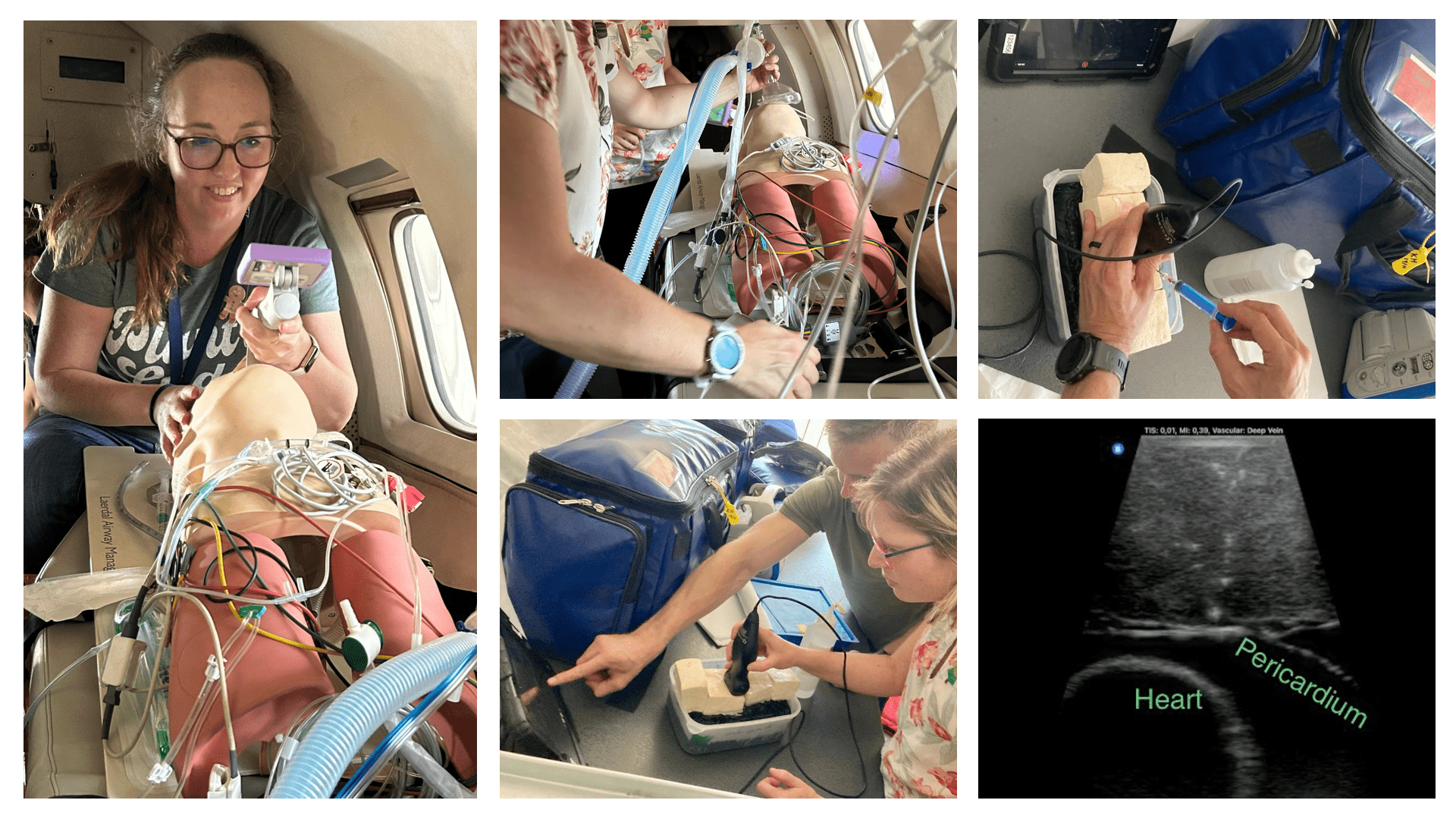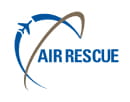29.11.2023 | Johannesburg, South Africa
Air Rescue’s commitment to excellence in the care we deliver was again demonstrated by the most recently completed training day in Johannesburg, South Africa. During this month’s training, we focused on HALO (High Acuity, Low Occurrence) procedures. The medical crew had the opportunity to perform these procedures in a simulated environment to ensure optimal performance whenever the need arose to do any of them during one of our air ambulance retrieval missions.
All based on clinical scenarios, the first topic for the day was temporary transvenous pacing. This included the setup, initiation, troubleshooting, and transferring from one device to another. After that, we moved on to a case involving a patient with a cardiac tamponade where the crew had to make the diagnosis using point-of-care ultrasound and then perform an u/s guided pericardiocentesis. A phantom masterfully constructed by one of our flight physicians from tofu, gelatine, a fluid-filled ping pong ball, a balloon, and some food colouring provided a very realistic and valuable learning opportunity.
Next, our physicians and nurses were confronted with a scenario inside the aircraft where they had to intubate a crashing patient mid-flight. This was the ideal time to explore different options for patient and clinician positioning for the procedure, equipment layout, and checklist use. Progressing down the difficult airway algorithm, this patient eventually needed a surgical cricothyroidotomy, which was performed using simulation models. To avoid any unnecessary contamination, and much to the relief of the aircraft engineers, this was done outside of the aircraft.

At that point, our gloves were already soiled and it was a good enough reason to continue along the same trajectory. What followed was the crew having to consider the nuances of managing a patient in flight with a tension pneumothorax on the left side (that is against the fuselage of the aircraft). They then had the opportunity to practice intercostal drain insertion on a simulation model suited for this scenario. This was also the ideal opportunity to practice ultrasound-guided insertion of a pneumothorax cannula.
Needless to say, the day provided not only a lot of learning but most certainly an opportunity to refresh those skills that are so critically important in the work we do on the air ambulance.

Dr. Ulrich Carshagen
Lead Flight Physician at Air Rescue Group


